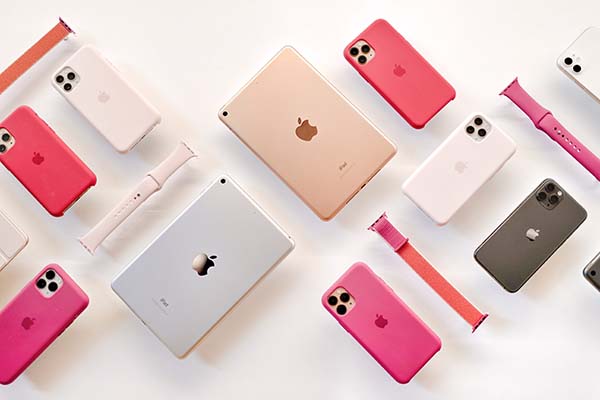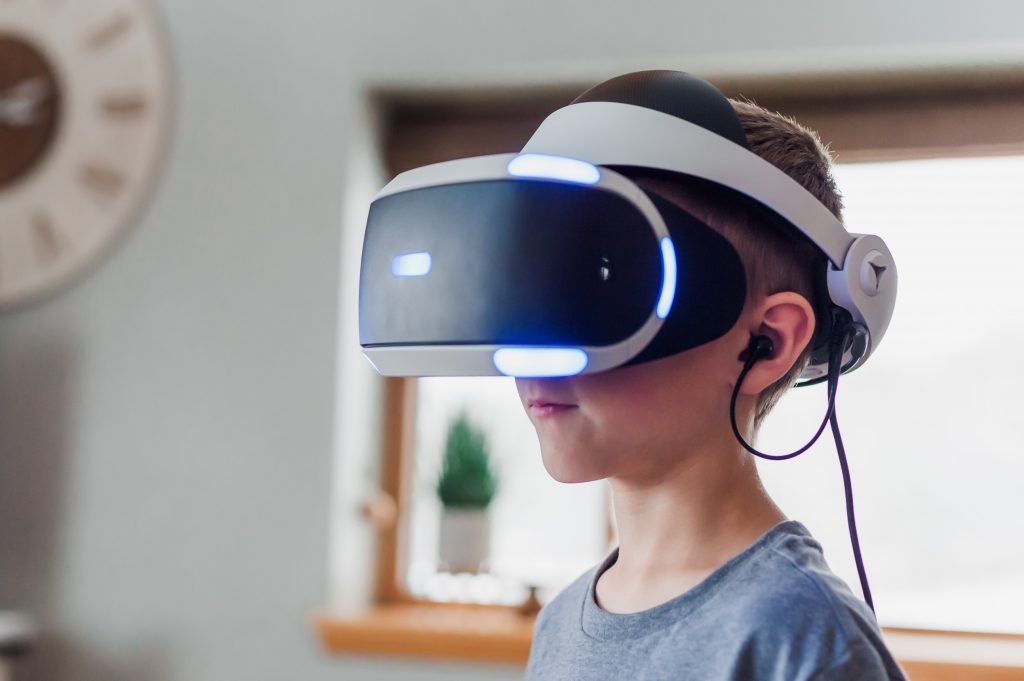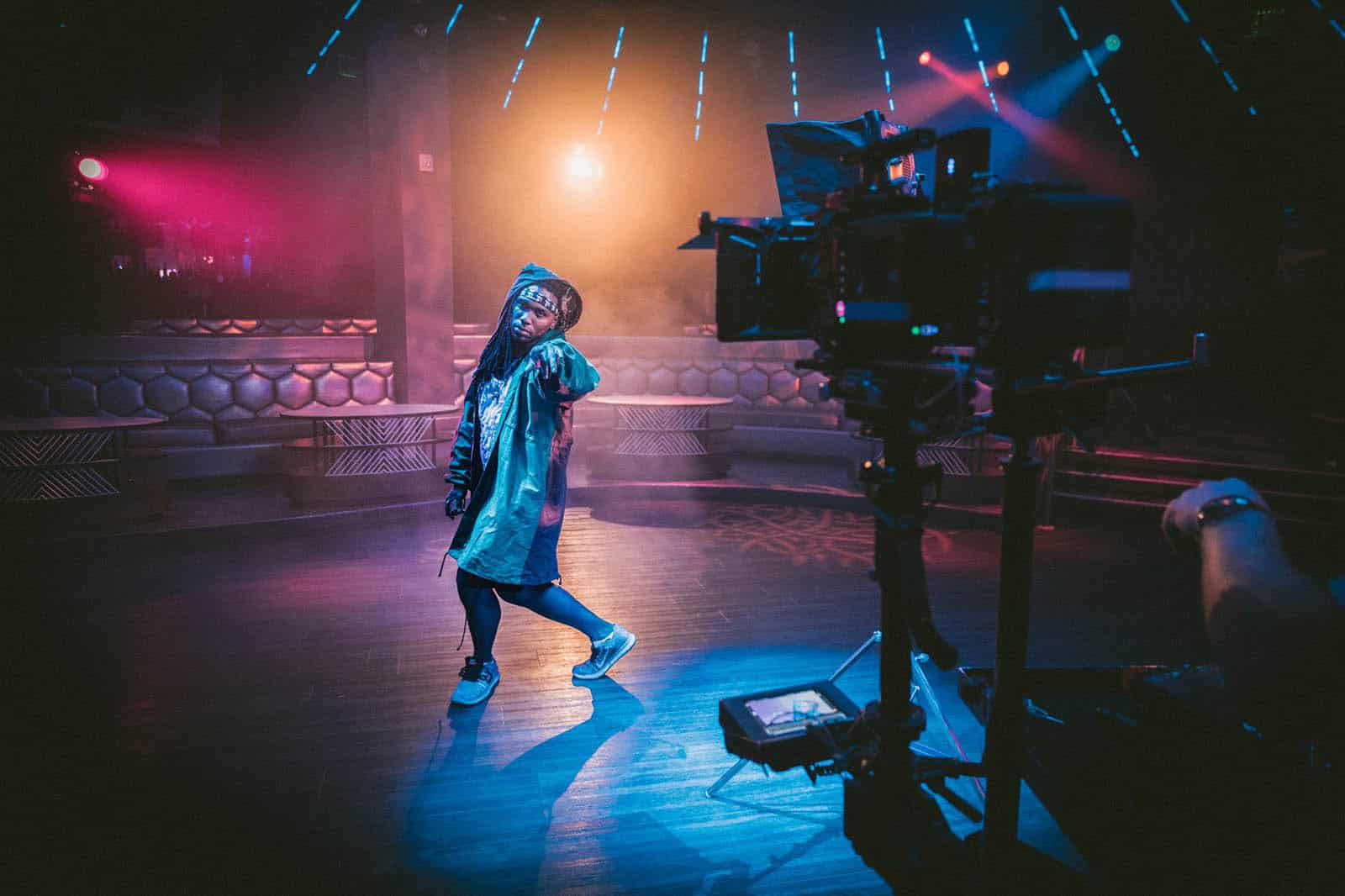We feel like we are still lost in 2021 while we look into the top UI UX Trends 2022.
While the UI UX Trends 2021 were mostly influenced by the changes in lifestyle brought by COVID-19, we are very excited that we will finally move beyond this. In 2022, the top UI UX trends include exciting futuristic things such as metaverse, audio content, UX localization, etc.
Top UI Design Trends of 2022
Top UX Design Trends of 2022
1. Dark Mode
If a white background with lots of white spaces is the trend in 2021, a dark mode or dark theme is making a comeback as one of the top UI UX Trends 2022.
The dark mode is not something new. More apps and websites are allowing users to toggle between a light mode and a high contrast dark mode. For instance, a rapid accessibility audit on whitehouse.gov found that the Whitehouse’s official site allows users to toggle between low contrast light mode and high contrast dark mode.
Why choose a dark theme (light text on dark background) in 2022? A dark theme with contrasting colors provides improved visibility for some visually impaired users. This is one of the checklist items under the accessibility audit. On top of this, a dark theme also reduces power usage for mobile phones with OLED screens.
If you have not considered creating a dark mode or dark theme for your apps and websites, it is probably time to start!
2. 3D and animations
The three-dimensional art of 3D design will hype up your interface as one of the top UI UX trends 2022. This is exactly what your business needs as businesses gradually open up in the world.
3D wallpapers will also come to Windows 11 from 2021 onwards as new themes.
Better still, create some 3D animations! Animations used to be a hindrance to many designers and developers as they may slow the loading speed of websites or apps and it is data consuming.
However, the taking off of 5G technology provides a greater speed in the transmissions of data. With a higher speed, users can access files, documents, and applications, including 3D animations, without much delay and waiting.
3. Optimization for more screen sizes and pixels

If you are new to graphic design, UI design, or UX design, a designer’s everyday job is more than just creating a set of cute icons.
A designer needs to create interfaces to fit different screen sizes and pixels. In addition to the common breakpoints of 480px, 768px, 1024px, and 1280px, designers need to cater to wearable devices, mobile devices, tablets, small screens, foldable devices, laptops, desktops, large screens, extra-large screens, and TV.
From 2022 and onwards, if you are a designer, expect yourself to complain more often, having to design and optimize for even more screen sizes and pixels. This UI trend will likely persist with the introduction of more products and devices, ranging from in-car screens to AR & VR devices.
Beginner designers can make use of the resources below as an introduction to different screen sizes:
- Apple’s Human Interface Guidelines
- Android’s developer documentation
4. Preparing your apps for large screens
As if all the screen sizes and pixels are not enough, Google is telling you to prepare your apps for large screens, especially desktops.
Google has also updated Material Design to expand its adaptive capabilities to help prepare apps for all form factors.
Apps designers have been mostly focused on mobile phones when designing interfaces for apps. However, as one of the top UI UX trends 2022, it is time to start looking at adapting your designs for larger screens, such as foldable phones and desktops.
5. Minimizing complexity
Super-app used to be a thing only in Asia. Tencent’s WeChat is undoubtedly the first-mover in the race of super-app, integrating services such as messaging, social media, payment, e-commerce, food delivery, cab-hailing, and many more under one app.
Other players in Asia are utilizing their geographical advantages to replicate the Tencent model. For example, Grab in Malaysia and Singapore, Gojek in Indonesia, etc.
On top of this, we see that many mega players in the global scene are starting to create super-apps. For example, Google has integrated multiple apps for Gmail, Google Meet, and Google Hangout Chat into one single app under Gmail. Twitter is adding “Spaces” while YouTube is adding “Shorts” to rival Tiktok.
Similarly, many major apps have also added collaboration features into their apps since the onset of the COVID-19 pandemic. All these additional features and functionalities have increased the complexities of the apps. Above all, these complexities have led to confusion and drops in user experience for the users.
In 2022, designers will be demanded to minimize the complexity of the apps as one of the top UI UX trends 2022. While companies continue to clutter more offerings and services into their apps, it will be up to designers to keep the interfaces clean and intuitive.
6. Design system and library

A design system enables designers to create work rapidly while consistently adhering to the same standard and quality. It creates a common library of UI design to be used by everyone within the same company or external parties.
A design system used to be a thing only for bigger companies as it is time-consuming to maintain a design system, especially if it won’t be frequently used.
However, with the availability of affordable, easy to use and scalable tools such as Figma, even smaller companies will start to create their own design systems from 2022 onwards. Everyone in the company will benefit from a common design system, from the design team, product team to the marketing team.
Image Source: Figma
7. Inclusive design
Inclusive design is more than just accessibility.
Accessibility ensures that a product or digital service is usable by as many people as possible, especially for those with special needs, disabilities, or impairments. On the other hand, inclusive design acknowledges that people are diverse and considers a wide range of human factors such as race, sociocultural background, gender, age, language, disabilities, etc. in the design process.
For example, producing a set of emojis that considers all races, gender identities, ages is a good inclusive design process.
While inclusive design is not something new, more efforts will be invested in 2022 to make sure that the design process takes into accounts more human factors and does not leave anyone behind, especially the minorities.
8. AR & VR expanding into B2B

When we think of AR and VR, IKEA’s furniture app or gaming will probably come into mind. In 2022, we will see an expansion of AR VR for B2B purposes.
The remote working trend has created massive opportunities for remote AR-based or VR-based training and virtual events.
As we slowly recover from the COVID-19 pandemic, more businesses have continued to offer remote working options to their employees which will further amplify the usage of AR VR technology. According to a report by Reuters, accounting and consulting firm PwC confirmed that it will allow all its 40,000 U.S. client services employees to work virtually and live anywhere they want in perpetuity, making it one of the biggest employers to embrace permanent remote work.
9. Metaverse (newly added as one of the top UI UX trends 2022)
Metaverse is a virtual world where users are connected to each other, digital devices, and environment by wearing a VR device.
Facebook has launched a VR remote work app, in its effort to ultimately create a “metaverse” environment. The new Horizon Workrooms app allows users of Oculus Quest 2 headsets, a brand under Facebook, to hold meetings as avatar versions of themselves.
It is suddenly a big thing toward the end of 2021 and will remain so in 2022. The reason is that Facebook is betting big on metaverse and has announced plans to hire 10,000 people in the EU to work on it.
10. Learning experience from the death of Clubhouse

Most UI UX trends for the last few years have been focusing on hero image, color, typography, video content, etc. Companies have been relying on these visual designs and visual content to attract users’ attention. Audio content has received little to no attention.
However, the audio-only app Clubhouse has shown that audio content deserves a relook. While we do not know whether Clubhouse will be dead or alive in 2022, Clubhouse is probably the app that gained the most attention in 2021. Read the UX review on Clubhouse.
UX designers and content strategists can learn from the Clubhouse experience and look into incorporating audio content in the design to woo the users.
11. Accessibility in more sectors
Are you aware that you might potentially get yourself a lawsuit for not offering adequate accessibility on your digital platform? According to Usablenet, the number of lawsuits concerning digital accessibility increased by almost 23% to 3550 cases from 2019 to 2020. That’s almost 10 lawsuits every business day in 2020.
While we have seen tech companies already prioritizing accessibility in products and services, we will see more sectors investing in accessibility in 2022, such as the health sector and education sector.
As a start, make sure that you do the following:
- Use contrasting colors (such as dark text on a light background or light text on dark background)
- Allow users to increase text size
- Provide captions for your videos
- Provide descriptions for your images
12. Localization in user experience and content
2022 will be all about offering personalized and localized user experience and content to your users.
Platforms should allow users to customize their dashboards, notifications, and the contents they see. On top of this, research should be carried out to identify the required localization in UX for each market.
For example, the users in each market have their unique preferences in the checkout process, add to cart, and payment methods. For most Western markets, email is the preferred login method while the mobile number is the default for some Asian markets.
In 2022 and beyond, the ongoing trade barriers and trade wars will split the markets into adopting multiple sets of standards. As a result, this will further amplify the need and importance of UX localization globally.























